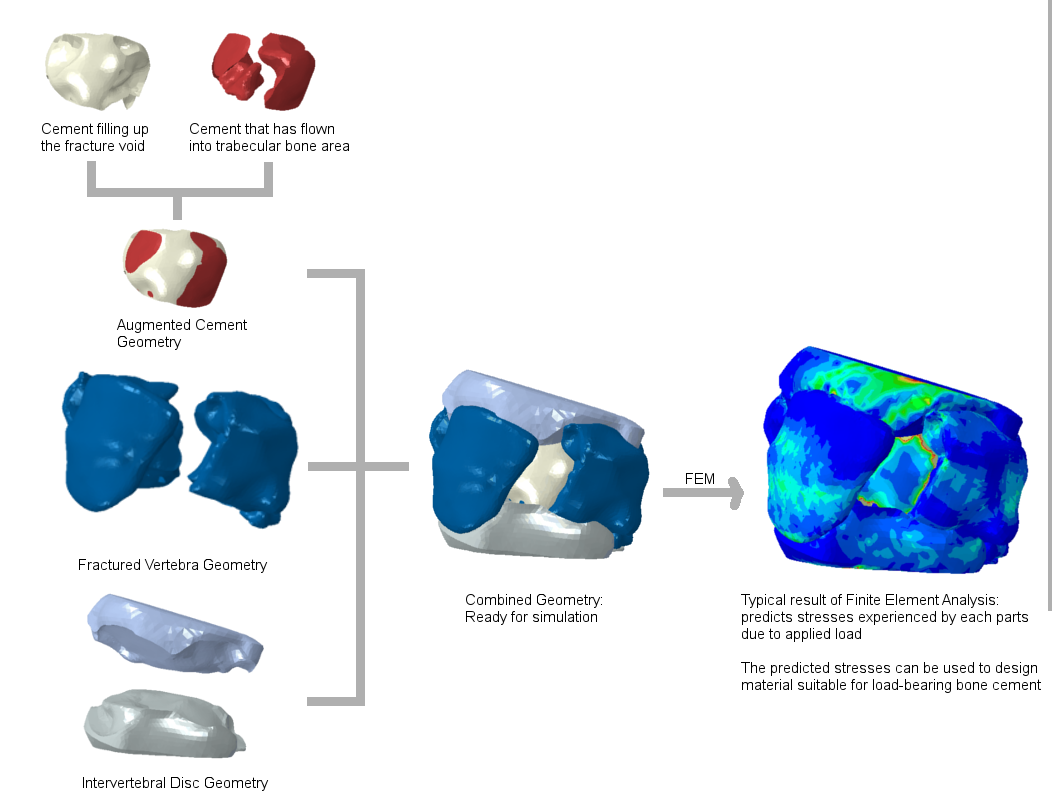Towards Optimal Stabilization of Complex Vertebral Fractures
The spine supports trunk mobility, an upright posture and provides protection of the spinal cord. Fractures in vertebrae may occur due to osteoporosis, metastasis or trauma, resulting in back pain and/or neurological deficits in severe cases. Vertebroplasty is a minimally-invasive, percutaneous surgical technique utilizing injectable bone cement to augment fractured vertebrae. The procedure provides stabilization of the spinal column and relieves the pain experienced by the patient. Clinically, the technique is used to treat stable osteoporotic, metastatic, and trauma fractures although the latter indications are still controversial.
Trauma-induced vertebral fractures in young patients are challenging, as no surgical procedure can fully restore the function of the vertebra. With increasing interest in the use of vertebroplasty as a surgical procedure to treat stable, trauma-induced fractures, a potential outgrowth of vertebroplasty may exist, by injecting an osteoconductive ceramic bone cement. However, an investigation on the effects of vertebroplasty on trauma-induced fractures is necessary, as low shear strength and fragmentation under cyclic loading are recognized weaknesses of ceramic cements.
Therefore, the aim of the current study is to investigate the effects of vertebroplasty on vertebrae with complex fractures, by observing the changes in stiffness of the overall vertebra and the development of stresses within the ceramic cements, under the influence of multi-axial loading.
Contact
No database information available

